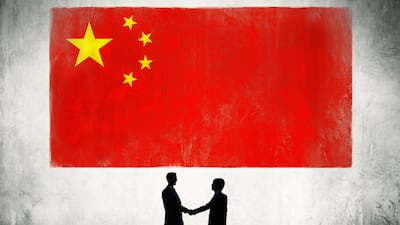Globally, we produce 141m tons of plastic packaging a year, according to UK recycling advocates Wrap, with around a third of all plastic packaging leaking from collection systems and polluting the environment.
Plastic production, use and disposal creates about 1.8bn tons of carbon emissions annually, it notes, contributing significantly to the related problem of global warming.
It’s no wonder then that citizens and governments across the world have declared war on single-use plastics. In Europe, single-use plastic plates, cutlery, straws, balloon sticks and cotton buds cannot be placed on the markets of EU Member States.
Medicines blister packaging – traditionally made from polyvinyl chloride (PVC), a halogenated material containing chlorine which is considered harmful to environment – has so far been excluded from plastics regulations, due to constraints on maintaining the safety and integrity of their contents.
However, at some point this grace period will run out. EU decision makers are currently debating whether this exemption should end in 2035 as part of the incoming Packaging and Packaging Waste Regulation, depending on how far the development of alternative materials and recycling processes have progressed by that point. (Also see "EU Parliament Stricter Than Council On Medicines And Medical Devices Packaging" - HBW Insight, 28 March, 2024.)
The consumer health industry is currently exploring alternatives. Haleon, Bayer Consumer Health and Sanofi Consumer Healthcare are among the manufacturers to have joined the Blister Pack Collective, which is looking at how to commercialize a sustainable dry molded fiber tablet blister pack. (Also see "Sanofi Joins Push For Plastic-Free Blister Packs" - HBW Insight, 9 February, 2024.)
But as circular packaging expert Filipe Vieira de Castro tells HBW Insight in this exclusive Q&A, “When we think about packaging for medical products, safety and keeping the medicine effective are top priorities. However, not many materials check these boxes.”
If we can’t get rid of plastics, then we will need to get better at recycling them. But as de Castro points out, and Circpak’s ReCoRe platform shows, national recycling systems are currently “not equipped to handle medical plastics in a closed-loop fashion at scale.”
De Castro also makes a compelling case for embracing extended producer responsibility, which asks companies to contribute significantly to waste management costs, simply because the proof is in the pudding. “The tangible impact of EPR is evident in the uptick of recycling rates in countries that have adopted such policies,” he notes.
Firstly, tell us about Veolia Group’s subsidiary company Circpack.
Circpack is the compass for recycling packaging around the globe. We support brand owners and packaging companies to understand, assess and improve the recyclability of their packaging. Driving principles for Circpack include being material agnostic and the belief that brand owners, packaging companies and consumers benefit from harmonization and cross-country alignment. This is all accomplished via operational tests and advice, certifications which back up your packaging's performance, and a wealth of knowledge supporting these topics more broadly. This takes the form of our freely available design for recycling guidelines, targeted masterclasses, recycling intelligence reports, and our ReCoRe platform, which provides a granular overview of recycling and legislation systems in 71 countries. Of course, being part of the Veolia group provides international presence and access to local knowledge and operational industrial facilities. Veolia itself is a significant player in water, waste and energy management and has a presence in 50 countries with 210,000+ employees.
Just how complex is the European regulatory landscape when it comes to plastics, their alternatives and recycling?
Recycling is a matter of four key steps: collection, sorting, reprocessing, and application (of the recycled raw material). Of these, the most impactful to recycling are the first two: collection and sorting, for the simple reason that they determine the volumes and quality of the recycling process. Separate collection and precise sorting can significantly increase collected volumes and reduce contamination rates, leading to more and a higher quality of recycled material. European regulation has so far not standardized these systems across the bloc; each of the 27 EU countries have locally determined requirements when it comes to collection and sorting. For collection, this can be as simple as different bin colors for PMD (plastic, metal, drinking carton) waste, or a granular system which targets those material flows separately.
While sorting generally follows the same principles, some countries are diverging from existing standards for varying reasons: e.g. France's Flux Development strategy. Design for Recycling (D4R) standards are just as complex between countries, as they are often facilitated by Producer Responsibility Organizations – the enactors of Extended Producer Responsibility (EPR – see below). Use of specific D4R standards is set at the country level with various preferred approaches. In many cases, countries refer to supranational standards set by organizations like Circpack and Recyclass.
How harmonized are packaging systems across the EU?
All in all, Europe generally agrees on the high level topics that coordinate the results of collection, sorting, reprocessing, and the application of materials, e.g. recycling. These topics have a longstanding regulatory history – think of the Waste Framework Directive, Packaging & Packaging Waste Directive, and Single-use Plastics Directive. However, the specifics that enable those systems have been in the hands of 27 different players in Europe alone, who all have their own perspective on how to manage legislation, EPR, fees, collection, labeling, DRS, sorting, and reprocessing.
Why is it important for companies to have access to accurate and up to date information about this landscape, and to be able to compare different countries?
Organizations are having to manage a stricter set of diverse requirements than ever before. Managing these sets of requirements - 27 in the EU alone - requires significant time investment and is crucial for companies to ensure compliance and optimize their packaging strategies. Circpack and ReCoRe enable companies to get the answers they need, quickly, with full confidence that the information they are using is not only validated, but based on a comparison which enables them to make educated decisions across 71 countries. By being able to compare all aspects of different countries, companies can identify specific regulatory requirements and adapt their packaging solutions accordingly to avoid penalties, reduce environmental impact, and meet sustainability goals.
Are there any viable alternatives to plastics in medicines packaging? If not, is better recycling the answer?
In the recycling world, we're constantly trying to improve how packaging gets recycled. However, when it comes to medical packaging, we hit a snag. First and foremost, it is crucial that this packaging remains safe for consumers to use and then safe again when it's discarded. But our current recycling system is not equipped to handle medical plastics in a closed-loop fashion at scale. This is due to limitations in how these plastics are collected, sorted, and reprocessed, making it impossible to reuse them for similar applications in the medical field, and often packaging in general. So, because of these strict safety standards, plastics in medical packaging face a recycling dilemma. They just can't simply be put back into the market today for the same use after recycling.
When we think about packaging for medical products, safety and keeping the medicine effective are top priorities. However, not many materials check these boxes. Biodegradable plastics still have a way to go, and paper materials can't be used for everything. Glass and metals might be our best bet since they're widely collected and inherently cleaned through recycling, as well as have many end-use applications. But there's a catch: their entire life cycle can be pretty carbon heavy.
As we aim for better recycling methods, we're caught in a balancing act with costs. I'm sure many readers will be interested in the possibility of chemical recycling, with its proposed wide applicability and appealing feature of sanitation. However, the high energy consumption of these processes brings us back to considering more traditional materials like glass and metals, for their established recycling efficiency.
There's really no silver bullet here; manufacturers need to assess what works best for them, and recyclers will do the same. The best thing we can all do is put effort into finding common ground between systems, which comes down to better understanding the complexities between them.
What is Extended Producer Responsibility, and why is it a positive thing?
Extended Producer Responsibility, or EPR for short, is a policy approach where the responsibility for the entire lifecycle of packaging, including its disposal and recycling, is placed back on the makers of products. The core idea is to incentivize producers to design products with their full lifecycle in mind, promoting more sustainable packaging solutions. EPR's application varies widely, involving fees, bonuses, and penalties to encourage compliance and eco-friendly practices. Producers might pay fees tied to their packaging volume and type, which fund recycling and sustainable material research. Bonuses can reward recyclable designs, while penalties deter non-compliance. However, these mechanisms differ greatly between countries, adding complexity for companies operating internationally and highlighting the need for adaptable packaging strategies.
The tangible impact of EPR is evident in the uptick of recycling rates in countries that have adopted such policies. This isn't coincidental; it's the direct result of aligning corporate incentives with environmental goals. Companies are nudged – or pushed, depending on the regulatory environment – to design packaging with its lifecycle in mind. The (hopeful) result? Packaging that's easier to recycle and less harmful to the environment.
But let's not pigeonhole EPR as a child of regulation alone. The example set by South Africa, where the industry itself initiated the EPR scheme, showcases a proactive approach which reflects a broader understanding within the industry that sustainability isn't just good for the planet; it's good for business.
While it's easy to lean heavily on the professional jargon, the essence of EPR is profoundly simple: it's about taking responsibility and using it as a lever for innovation and environmental stewardship.
What are the current and upcoming regulations or changes that companies operating in Europe should be aware of?
The majority of the above answers have leaned on a specific point: while the four steps of recycling themselves are difficult but manageable, the differentiation of recycling systems around the world, and in Europe, present a significant challenge for companies trying to balance business and doing the right thing. The upcoming shift from the Packaging and Packaging Waste Directive (PPWD) to a more stringent Packaging and Packaging Waste Regulation (PPWR) in the European market is a game changer in this landscape.
The upcoming evolution from the PPWD to the PPWR represents a pivotal change for the European marketplace. The Directive’s approach was to set recycling targets and advise on excluding certain packaging options, yet it left much to member states' discretion, leading to a patchwork of recycling practices. In contrast, the PPWR will enforce these advisories as compulsory requirements and introduce a wider range of targets. This transition aims to harmonize recycling efforts across Europe, addressing the current disparities and moving towards a more standardized and effective recycling system. Finally, it's important to note that there are notable exceptions, particularly for medical packaging, which acknowledges the unique requirements of this sector.
At the end of the day, this shift is all about harmonization. By introducing the PPWR, Europe is moving towards standardizing key aspects like collection systems, Deposit Return Schemes, and crucially, Design for Recycling standards. This means that, looking forward, the ability of packaging to be recycled will play a significant role in determining its access to the European single market.




